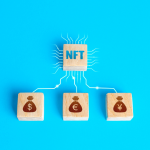
‘Neural Prophet,’ a basic forecasting package from Meta/Facebook AI, addresses some of the most common client demands by maximising the scalability and flexibility of time series projections based on Meta’s own internal data scientists and requests from external industry practitioners. The growing data quantity needs new approaches, whether it’s forecasting infection rates for disease control programmes or projecting product demand to adequately store inventories.
Nonparametric machine learning approaches do not make any assumptions about the type of mapping function. They must be precise as well as simple to comprehend. They can pick any functional form from the training data since they are not establishing assumptions. Deep learning models are scalable to fit complicated datasets due to their nature. When predictions are used to drive economic or operational decisions, however, their black-box character becomes a negative.
Statistical models that rely on underlying data include the autoregressive integrated moving average (ARIMA) and the exponential smoothing state space (ETS). They lack the scalability required to handle large volumes of data and complex patterns, though.
Between conventional interpretable and contemporary deep learning models, there is a big gap. The study conducted by Meta AI tackles this problem by proposing that hybrid models bridge the gap between the two. They’ve also come up with an improved solution: NeuralProphet. This package provides a scalable and user-friendly framework for hybrid forecasting models that builds on the success of our open source forecasting library, Facebook Prophet, which was released in 2017.
NeuralProphet improves on Prophet by addressing the framework’s major weaknesses, such as extensibility, lack of local context for predictions, and forecast accuracy. NeuralProphet is extremely scalable, easy to use, and expandable because it is built entirely in PyTorch and trained using typical deep learning methods.
In addition, NeuralProphet now includes support for local context, auto-regression, and lagged variables. By designing some model components as neural networks, NeuralProphet improves prediction accuracy using a hybrid model.
What is the mechanism behind it?

Like Prophet, NeuralProphet blends traditional components with neural networks to provide very accurate time-series forecasts rapidly. Advanced practitioners can employ a superset of bespoke modules thanks to the framework’s intelligent hyperparameter selection. Model weight, sparsification, and global modelling capabilities are all available through these bespoke modules.
As a module, any model component capable of Stochastic Gradient Descent (SGD) may be incorporated. This feature makes it straightforward to include cutting-edge forecasting techniques into the framework.
NeuralProphet supports auto-regression and lagged covariates, as well as all of the original Prophet model’s components. As seen by situations involving energy use, traffic patterns, air quality measures, and other issues, most time series forecasting displays similar dynamics.
What’s the deal with NeuralProphet?

Prophet users have had challenges as a result of restrictions in core features, such as the absence of local context. Prophet is a probabilistic programming language developed on top of Stan. As a result, it was difficult to enlarge the initial forecasting library. One of the most often requested features on GitHub is the ability to develop Prophet.
NeuralProphet replaces Stan with PyTorch, a versatile and user-friendly framework, and rebuilds Prophet from the ground up, solving the flaws. PyTorch makes it simple for developers to add new features to the framework and incorporate fresh research.
Upgrading Prophet to NeuralProphet gives frontline engineers and business leaders new insights that can help them enhance a wide range of industrial applications.




